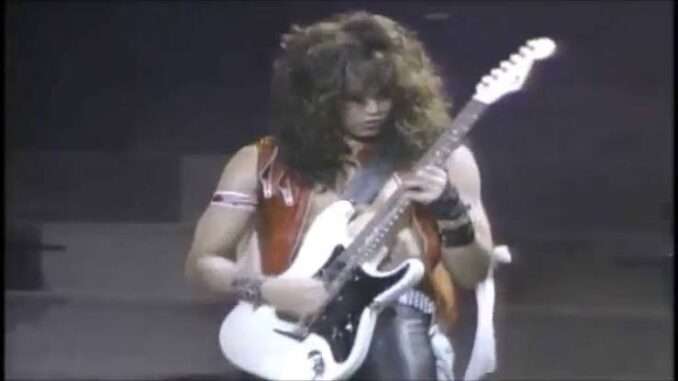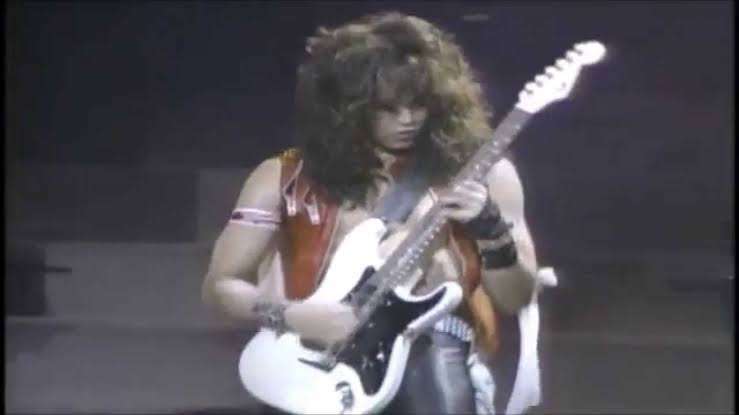

Few moments in Jake E. Lee’s career have remained as iconic as his blistering live guitar solo during “Suicide Solution” in 1984, a performance that not only showcased his technical brilliance but also marked a defining chapter in his tenure with Ozzy Osbourne. Looking back on that era, Lee has often described it as one of the highlights of his musical journey, a period when he was carving out his own identity as a guitarist while standing on one of the biggest stages in rock.
“Suicide Solution” had already been one of Ozzy’s most infamous tracks, born out of the wild and dangerous energy of his early solo career. But when Lee took over the guitarist role in 1983, following Randy Rhoads’ tragic passing and Brad Gillis’ brief stint, the song took on a new life in the live setting. By the time the Bark at the Moon tour was in full swing in 1984, Lee had transformed the middle section of “Suicide Solution” into an extended showcase for his guitar work, turning every performance into a high-wire act of improvisation, precision, and pure firepower.
Lee has reflected that stepping into those shoes was not easy. Randy Rhoads had been idolized by fans and immortalized for his groundbreaking playing, and Lee knew comparisons would be inevitable. “I didn’t want to copy Randy,” he once explained. “I had to find a way to respect what came before me but also show the fans who I was.” The “Suicide Solution” solo became that opportunity. Each night on stage, Lee pushed himself to bring a new energy to the song, incorporating searing speed runs, inventive tapping sequences, and explosive bends that made the crowd erupt.
One of the most memorable renditions came during the 1984 live shows that were later circulated on bootlegs and eventually found their way onto various recordings and video releases. Lee’s solo stretched far beyond the album version, turning into a controlled frenzy that blurred the line between structured composition and free-flowing jam. Fans still point to those solos as some of the most electrifying guitar work of the decade.
Looking back, Lee has said that those solos were as much about expression as they were about technical display. “I was angry, I was hungry, I was excited—all of that came out in those solos. I think that’s why they resonated. It wasn’t just about playing fast or loud, it was about pouring everything I had into the moment.” His style blended aggressive heavy metal techniques with a blues-inspired rawness, giving the solos a distinct personality that stood apart from his peers.
Critics at the time were quick to notice. While Bark at the Moon had already established Lee as a formidable studio guitarist, the live “Suicide Solution” solos cemented his reputation as a must-see performer. Music journalists praised his ability to captivate audiences during extended solo sections without losing intensity or purpose, something only the greats could accomplish. For fans, it was proof that Ozzy had found another once-in-a-generation guitarist to follow in Rhoads’ footsteps.
Even decades later, Lee continues to hold a special place in his heart for those moments on stage. He has admitted that revisiting recordings of the 1984 “Suicide Solution” solos fills him with both pride and nostalgia. “It reminds me of a time when everything was new and dangerous,” he said in a past interview. “I was still proving myself, and that song became the place where I could show people who Jake E. Lee really was.”
The influence of those solos continues to ripple through the world of heavy metal guitarists. Younger players often cite Lee’s live “Suicide Solution” work as a key inspiration, praising not only the technical elements but also the unrestrained passion that came through in every note. Guitar forums and fan discussions still dissect his phrasing, tone, and improvisational choices, a testament to the lasting legacy of that 1984 performance.
Ultimately, Jake E. Lee’s reflections on “Suicide Solution” serve as a reminder of the power of live music to capture lightning in a bottle. What might have begun as a song about Ozzy’s self-destructive tendencies became, through Lee’s contribution, a stage for raw artistry and unforgettable showmanship. Nearly four decades later, fans still remember those solos not only as a highlight of Ozzy’s live shows but also as a defining statement from a guitarist who carved his own path in rock history.
Leave a Reply